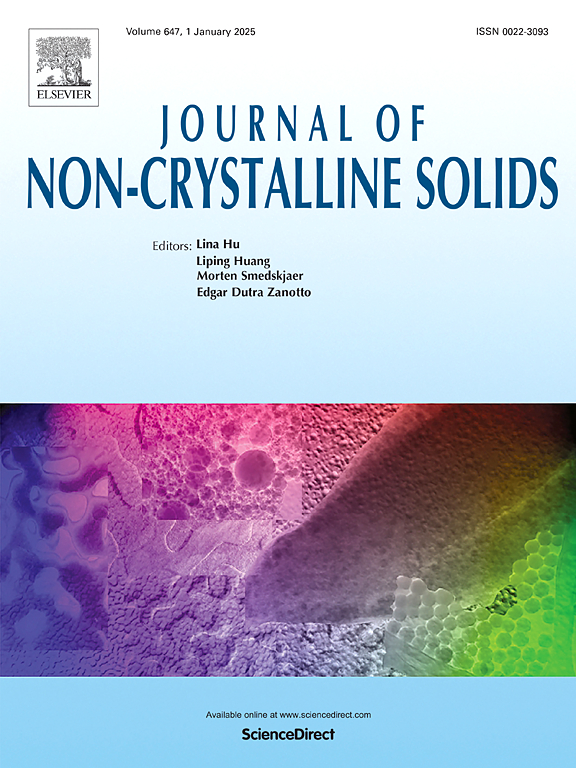通过机器学习推进玻璃陶瓷结晶相的预测
IF 3.2
3区 材料科学
Q1 MATERIALS SCIENCE, CERAMICS
引用次数: 0
摘要
锂铝硅酸盐(LAS)玻璃陶瓷具有高透明度、高断裂韧性和超低热膨胀等优异性能,因此被广泛应用于各种领域。传统上,LAS 玻璃陶瓷的开发主要依靠相图来确定主要晶相。然而,这种方法受限于有限的成分范围和未知的加热处理参数,阻碍了高性能玻璃陶瓷的高效开发。在本研究中,我们建立了一个全面的 LAS 玻璃陶瓷小规模数据库,其中包括 751 个样品,这些样品的特征包括 27 种成分、成核温度、成核时间、结晶温度、结晶时间和 13 种晶相。我们采用了五种算法,即随机森林 (RF)、极梯度提升 (XGBoost)、分类和回归树 (CART)、K-近邻 (K-NN) 和多层感知器 (MLP) 分类器来预测潜在的结晶相。结果表明,RF 的整体性能最佳,准确率最高,为 0.8609;hamming loss 最低,为 0.0142;micro F1 分数最高,为 0.9234。这项工作推进了对 LAS 玻璃陶瓷中晶相的理解和预测,为这些材料的开发和优化提供了宝贵的见解。本文章由计算机程序翻译,如有差异,请以英文原文为准。
Advancing the prediction of crystalline phases in glass-ceramics via machine learning
Lithium aluminosilicate (LAS) glass-ceramics are widely utilized in diverse application, owing to their outstanding properties such as high transparency, high fracture toughness and ultra-low thermal expansion. The development of LAS glass-ceramics has traditionally relied on the phase diagram to identify primary crystalline phases. However, this approach is limited by constrained composition ranges and unknown heating treatment parameters, hindering the efficient development of high-performance glass-ceramics. In this study, we establish a comprehensive small-scale database of LAS glass-ceramics, comprising 751 samples characterized by 27 compositions, nucleation temperature, nucleation time, crystallization temperature, crystallization time and 13 crystalline phases. We employ five algorithms, i.e. Random Forest (RF), eXtreme Gradient Boosting (XGBoost), Classification and Regression Trees (CART), K-Nearest Neighbors (K-NN) and Multi-Layer Perceptron (MLP) Classifier to predict the potential crystalline phases. Our results demonstrate that RF achieves the best overall performance, with the highest accuracy of 0.8609, the lowest hamming loss of 0.0142, and the highest micro F1 score of 0.9234. This work advances the understanding and prediction of crystalline phases in LAS glass-ceramics, providing valuable insights for the development and optimization of these materials.
求助全文
通过发布文献求助,成功后即可免费获取论文全文。
去求助
来源期刊

Journal of Non-crystalline Solids
工程技术-材料科学:硅酸盐
CiteScore
6.50
自引率
11.40%
发文量
576
审稿时长
35 days
期刊介绍:
The Journal of Non-Crystalline Solids publishes review articles, research papers, and Letters to the Editor on amorphous and glassy materials, including inorganic, organic, polymeric, hybrid and metallic systems. Papers on partially glassy materials, such as glass-ceramics and glass-matrix composites, and papers involving the liquid state are also included in so far as the properties of the liquid are relevant for the formation of the solid.
In all cases the papers must demonstrate both novelty and importance to the field, by way of significant advances in understanding or application of non-crystalline solids; in the case of Letters, a compelling case must also be made for expedited handling.
 求助内容:
求助内容: 应助结果提醒方式:
应助结果提醒方式:


